|
Books Should Be Free Loyal Books Free Public Domain Audiobooks & eBook Downloads |
|
|
Books Should Be Free Loyal Books Free Public Domain Audiobooks & eBook Downloads |
|
Books of Memoirs |
|---|
|
Book type:
Sort by:
View by:
|
By: Fanny Burney (1752-1840) | |
|---|---|
 The Diary and Letters of Madame D'Arblay — Volume 1
The Diary and Letters of Madame D'Arblay — Volume 1
| |
By: Fanny Loviot | |
|---|---|
 Lady's Captivity among Chinese Pirates in the Chinese Seas
Lady's Captivity among Chinese Pirates in the Chinese Seas
This thrilling narrative recounts the true story of Fanny Loviot, a wealthy, young French girl who was kidnapped at sea. After setting sail for California in 1855, Fanny's boat was overtaken by Chinese pirates who held her hostage and demanded a ransom. This personal account follows her trying time in captivity, as well as her dramatic rescue by British authorities. | |
By: Ferdinand Ossendowski (1876-1945) | |
|---|---|
 Beasts, Men and Gods
Beasts, Men and Gods
“Beasts, Men and Gods” is an account of an epic journey, filled with perils and narrow escapes, in the mold of “The Lord of the Rings.”The difference is: it’s all true.Ferdinand Ossendowski was a Pole who found himself in Siberia and on the losing side during the Bolshevik Revolution. To escape being rounded up and shot, he set out with a friend to reach the Pacific, there to take ship back to Europe. During his journey he fell in with dozens of other military men who shared the same objective… but nearly every one of them perished on the way... | |
By: Florence A. Merriam (1863-1948) | |
|---|---|
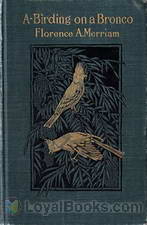 A-Birding on a Bronco
A-Birding on a Bronco
Florence Augusta Merriam Bailey (August 8, 1863 - September 22, 1948) was an American ornithologist and nature writer. She started observing bird behavior at a time when most bird study was based on collections and skins. By 1885, she began to write articles focusing on protecting birds. Her introduction of a birdwatching field guide, aimed at living birds, is considered the first in the tradition of modern bird guides. She wrote the first of these at the age of 26, initially as a series of notes in the Audubon Magazine and later as books. In "A-Birding on a Bronco," she writes an engaging memoir about her several trips to study birds on a ranch in California in the late 1800's. | |
By: Frances E. Willard (1839-1898) | |
|---|---|
 Wheel Within A Wheel
Wheel Within A Wheel
Frances Willard was an influential campaigner and educator for social reforms, temperance and women's education, suffrage and empowerment, as shown in her motto "Do everything". She was a long-serving national president of the Woman's Christian Temperance Union and famous in many countries for her writings and speaking tours. This little book is a wryly humorous account of "How I Learned to Ride the Bicycle", something she achieved at the age of 53 and of which she was very proud! In it, she... | |
By: Frances M. A. Roe | |
|---|---|
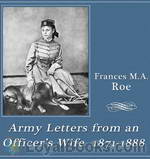 Army Letters from an Officer's Wife, 1871-1888
Army Letters from an Officer's Wife, 1871-1888
"There appeared from the bushes in front of me, and right in the path, two immense gray wolves . . . Rollo saw them and stopped instantly, giving deep sighs, preparing to snort, I knew . . . To give myself courage, I talked to the horse, slowly turning him around . . . when out of the bushes in front of us, there came a third wolf! The situation was not pleasant and without stopping to think, I said ‘Rollo, we must run him down - now do your best’ and taking a firm hold of the bridle, and bracing myself in the saddle, I struck the horse with my whip and gave an awful scream... | |
By: Frances Power Cobbe (1822-1904) | |
|---|---|
 Life of Frances Power Cobbe as Told by Herself
Life of Frances Power Cobbe as Told by Herself
Frances Power Cobbe was an important Irish-Anglo writer, suffragist, anti-vivisectionist, philosopher, and reformer of the mid to late 1800s. She is best known for her campaigns for women's rights , and against wife abuse and vivisection. She was the lifelong partner of Welsh sculptor Mary Lloyd. This autobiography was written very late in her life, and published shortly after her death. - Summary by Ciufi Galeazzi | |
By: Frances Ridley Havergal (1836-1879) | |
|---|---|
 Kept for the Master's Use
Kept for the Master's Use
The memoirs of Frances Ridley Havergal, a great missionary and hymn writer. | |
By: François-René de Chateaubriand (1768-1848) | |
|---|---|
 Memoirs of Chateaubriand Volume II
Memoirs of Chateaubriand Volume II
Volume II of Chateaubriand's Memoirs from Beyond the Tomb, translated by Teixeira de Mattos. This volume covers the period from his return to France to fight, reluctantly, for the King, his early literary successes with many portraits of the great and the good, including Napoleon, through to his travels in the Near East in the first decade of the 19th century, all through with his characteristic blend of mordant wit and melancholy. - Summary by Nicole Lee | |
 Memoirs of Chateaubriand Volume III
Memoirs of Chateaubriand Volume III
The third volume of Teixeira de Mattos' translation of Chateaubriand's Memoirs from Beyond the Tomb covers the spectacular fall, exile, and death of Napoleon, and is replete with the author's trenchant views on the some of the most significant figures of his era, tinged with his signature melancholy. - Summary by Nicole Lee | |
 Memoirs of Chateaubriand Volume IV
Memoirs of Chateaubriand Volume IV
After the extinction of Napoleon's comet on St Helena, Chateaubriand covers the Bourbon Restoration in this volume, meeting a dazzling array of literary and political figures, as his diplomatic career advances. - Summary by Nicole Lee | |
 Memoirs of Chateaubriand Volume V
Memoirs of Chateaubriand Volume V
The memoirs of Chateaubriand continue in Volume 5, with the author, now a grand hommes des lettres, still in the thick of political events, telling his story with his trademark acerbity and melancholy, interspersed with extracts from his voluminous correspondence with the literary, intellectual and political stars of his age. | |
By: Frank Thomas Bullen (1857-1915) | |
|---|---|
 Confessions of a Tradesman
Confessions of a Tradesman
Frank T. Bullen is best known for his books based on his adventures at sea. However, he had a life on shore as well. He first went to sea as a boy as a cabin boy. He there had many adventures as a hand on a whaling ship. He then came ashore and tried his hand at being a "Tradesman". This is that story and also tells how he became the well-known author he is now. It is a very interesting, enjoyable and entertaining depiction of the trials and tribulations he had in his life in 19th century London as a tradesman. - Summary by Wayne Cooke | |
By: Franz Liszt (1811-1886) | |
|---|---|
 Life of Chopin
Life of Chopin
Chopin was a romantic era Polish composer. This work is a memoir by Liszt who knew Chopin both as man and artist. This memoir gives a unique understanding to the psychological character of the compositions of Chopin. It also offers Liszt's insight into some of Chopin's polonaises, especially the grand polonaise in F sharp minor. Liszt explains the strange emotion "ZAL" which is inclosed in his compositions. Then, presents a brief sketch on the lives of other great people in Chopin's circle. After that, Liszt discusses Chopin's fame and early life. Finally, Liszt gives a detailed account on Chopin's sufferings due to ill health and the unfortunate departure of the great composer. | |
By: Frederick Douglass (1818-1895) | |
|---|---|
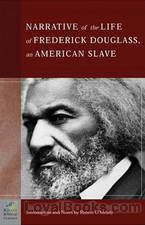 Narrative of the Life of Frederick Douglass
Narrative of the Life of Frederick Douglass
Frederick Douglass was born into slavery on a Maryland plantation. He faced hardship as a child, but later encountered owners who were relatively liberal and allowed him to learn to read, write and be in contact with freed slaves. At the age of 20, he escaped from the plantation and made his way to New York. Though he remained a fugitive, he married and changed his name to avoid being caught. He continued his education and became involved in the Abolitionist Movement. He began touring the country, speaking passionately about the unjust, cruel and inhuman practice of slavery... | |
By: Frederick Hoffman | |
|---|---|
 A Sailor of King George
A Sailor of King George
| |
By: Frederick Marryat (1792-1848) | |
|---|---|
 Jacob Faithful
Jacob Faithful
Rebelling against the career chosen for him by his wealthy family, Frederic Marryat joined the Royal Navy in 1806 at the age of 14. He first served as a midshipman in the 38-gun frigate "HMS Imperieuse" commanded by Lord Cochran, 10th Earl of Dundonald whose real life exploits were used by Marryat in his fiction and which formed the basis for other famous fictional characters like Horatio Hornblower and Jack Aubrey. Having survived more than 50 sea battles and attained the rank of Post Captain, he resigned from the Navy and devoted the rest of his life to writing, drawing a good deal on his distinguished career in the Navy and is now considered the Father of Modern Nautical Fiction... | |
By: Geoffrey H. Malins (1887-1943) | |
|---|---|
 How I Filmed the War
How I Filmed the War
An account of World War I and the experience of filming it by an early cinematographer (and, after the war, successful director) who was there. | |
By: George B. Grinnell | |
|---|---|
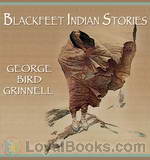 Blackfeet Indian Stories
Blackfeet Indian Stories
The Blackfeet were hunters, travelling from place to place on foot. They used implements of stone, wood, or bone, wore clothing made of skins, and lived in tents covered by hides. Dogs, their only tame animals, were used as beasts of burden to carry small packs and drag light loads. The stories here told come down to us from very ancient times. Grandfathers have told them to their grandchildren, and these again to their grandchildren, and so from mouth to mouth, through many generations, they have reached our time. (Sibella Denton) | |
By: George Bethune English (1787-1828) | |
|---|---|
 A Narrative of the Expedition to Dongola and Sennaar
A Narrative of the Expedition to Dongola and Sennaar
As a second lieutenant in the United States Marine Corps during the War of 1812 assigned to Marine Corps headquarters, English sailed to the Mediterranean, and was among the first citizens of the United States known to have visited Egypt. Shortly after arriving in Egypt he resigned his commission, converted to Islam and joined Isma'il Pasha in an expedition up the Nile River against Sennar in 1820, winning distinction as an officer of artillery. He published his Narrative of the Expedition to Dongola and Sennaar (London 1822) regarding his exploits. (Introduction adapted by obform from Wikipedia) | |
By: George Dunderdale (1822-1903) | |
|---|---|
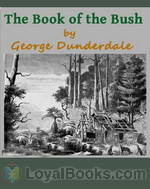 The Book of the Bush
The Book of the Bush
While the world was young, nations could be founded peaceably. There was plenty of unoccupied country, and when two neighbouring patriarchs found their flocks were becoming too numerous for the pasture, one said to the other: "Let there be no quarrel, I pray, between thee and me; the whole earth is between us, and the land is watered as the garden of Paradise. If thou wilt go to the east, I will go to the west; or if thou wilt go to the west, I will go to the east." So they parted in peace.(excerpt from book) | |
By: George Eggleston (1839-1911) | |
|---|---|
 Rebel's Recollections
Rebel's Recollections
George Cary Eggleston's Civil War memoir begins with a separate essay on the living conditions and political opinions of Virginia’s citizenry before secession. The body of the work contains vivid descriptions and accounts of the men and women of the South during the time of the Confederacy. Eggleston praises its war heroes, Robert E. Lee, Stonewall Jackson, and Jeb Stuart, but is highly critical of Jefferson Davis and of his government’s inefficiencies, red-tape, and favoritism. The book concludes with the war's end and a tribute to the character of the newly freed slaves... | |
By: George Gissing (1857-1903) | |
|---|---|
 Private Papers of Henry Ryecroft
Private Papers of Henry Ryecroft
This novel consists of selections from the diary of an author, starting soon after his retirement and continuing until just before his death. There is very little in the way of plot, but a great deal of quiet musing about art, nature, society, and the things that make life worth living. Although this is a work of fiction, there are clear parallels between the narrator's life and Gissing's own life. This leads many commenters to view it as semi-autobiographical. | |
By: George Payne Rainsford James (1799-1860) | |
|---|---|
 Agnes Sorel
Agnes Sorel
The Hundred Years' War: a series of conflicts waged from 1337 to 1453 by the House of Plantagenet, rulers of the Kingdom of England, against the House of Valois, rulers of the Kingdom of France, over the succession to the French throne. It was a time of intrigue, plot, murder and romance. Agnes Sorel, aged 20, became the favorite mistress of the King of France, wielding much influence over him and earning many enemies. Her untimely death at the age of 28, just days after bearing him a fourth child, was blamed on dysentery... | |
 Arabella Stuart
Arabella Stuart
Lady Arabella Stuart was an English noblewoman at the beginning of the seventeenth century. At one time considered to be a possible successor to Elizabeth I, the crown eventually went to her cousin, the tyrannical James I. Our story begins in 1603, shortly after his ascension to the throne. Apparently she was happy at the change in fortune, although relations with her kinsman deteriorated after her clandestine marriage, which was incorrectly seen as a power struggle. Even her closest friends could not protect her. In James's usual fashion, this is a colorful fictional account of her life. | |
By: George Washburn Smalley (1833-1916) | |
|---|---|
 Anglo-American Memories
Anglo-American Memories
“These Memories [1911] were written in the first instance for Americans and have appeared week by week each Sunday in the New York Tribune…. they are mainly concerned with men of exceptional mark and position in America and Europe whom I have met, and with events of which I had some personal knowledge. There is no attempt at a consecutive story.” Smalley was an American journalist born in Massachusetts in 1833; he wrote from and about many places in America and Europe. - Summary by Book Preface and David Wales | |
By: George-Günther Freiherr von Forstner (1882-1940) | |
|---|---|
 The Journal of Submarine Commander Von Forstner
The Journal of Submarine Commander Von Forstner
The Journal of Submarine Commander Von Forstner is a graphic account of WWI submarine warfare. Forstner was the commander of German U-boat U-28. His journal, first published 1916, gives a gritty picture of daily life inside a submarine and details several torpedo attacks on Allied shipping. The 1917 translation of Forstner’s journal into English was unquestionably intended to bolster the Allied war effort. In the foreword, the translator states: “Nothing at the present day has aroused such fear as this invisible enemy, nor has anything outraged the civilized world like the tragedies caused by the German submarines... | |
By: Gertrude Atherton (1857-1948) | |
|---|---|
 Rezanov
Rezanov
This novel by the prolific Californian author Gertrude Horn Atherton is based on the real life story of Nikolai Rezanov, a man who, in 1806, pushed for the Russian colonization of Alaska and California. "Not twenty pages have you turned before you know this Rezanov, privy councilor, grand chamberlain, plenipotentiary of the Russo-American company, imperial inspector of the extreme eastern and northwestern dominions of his imperial majesty Alexander the First, emperor of Russia—all this and more, a man... | |
By: Giacomo Casanova (1725-1798) | |
|---|---|
 The Memoirs of Jacques Casanova
The Memoirs of Jacques Casanova
This is the first of five volumes. – Giacomo Casanova (1725 in Venice – 1798 in Dux, Bohemia, now Duchcov, Czech Republic) was a famous Venetian adventurer, writer, and womanizer. He used charm, guile, threats, intimidation, and aggression, when necessary, to conquer women, sometimes leaving behind children or debt. In his autobiography Histoire de ma vie (Story of My Life), regarded as one of the most authentic sources of the customs and norms of European social life during the 18th century, he mentions 122 women with whom he had sex... | |
By: Harriet E. Wilson (1825-1900) | |
|---|---|
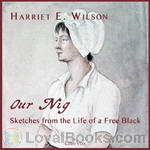 Our Nig, or, Sketches from the Life of a Free Black, In A Two-Story White House
Our Nig, or, Sketches from the Life of a Free Black, In A Two-Story White House
Frado is a colored girl, living in the USA a few years before the Civil War. She is abandoned by her own white mother in the house of the Bellmont's- where she is treated badly. This is a sad book, but Frado's cheerfulness and dignity will make you love her until the end. (Introduction by Stav Nisser) | |
By: Harriet Jacobs (1813-1897) | |
|---|---|
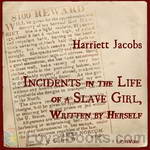 Incidents in the Life of a Slave Girl, Written by Herself
Incidents in the Life of a Slave Girl, Written by Herself
Born in slavery, but being fortunate enough to be owned by a benevolent mistress, her life takes a tragic turn when her parents and her benefactor die. The new heir to the property (and slaves) is a cruel and lewd man who begins to make inappropriate advances to the lovely young slave-girl. In a bid to escape, she becomes entangled in a relationship with a neighboring landowner who promises a better life, and she even has two children. However, things become worse for her when her cruel owner decides to punish her by sending her and her children to a distant cotton plantation to be “broken in... | |
By: Helen Gansevoort Edwards Mackay (1876-1961) | |
|---|---|
 Journal Of Small Things
Journal Of Small Things
Brief journal sketches from France during WW1. The author was was American, but went on to spend much of her life in France. - Summary by kathrinee | |
By: Helen Keller (1888-1968) | |
|---|---|
 The Story of My Life
The Story of My Life
An autobiography of Helen Keller published when the author was still in her early 20's. The narrative reveals how her mind developed and matured until she began her studies at Radcliffe College | |
By: Henry Bibb (1815-1854) | |
|---|---|
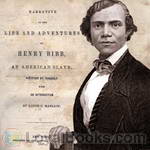 Narrative of the Life and Adventures of Henry Bibb, an American Slave
Narrative of the Life and Adventures of Henry Bibb, an American Slave
Henry Walton Bibb was born a slave. His father was white although his identity was not positively known. Bibb was separated from his mother at a very young age and hired out to other slave owners for most of his childhood. Always yearning for his freedom, he made his first escape from slavery in 1842. He was recaptured and escaped, recaptured and escaped over and over; but he never gave up on his desire to be a man in control of his own destiny. | |
By: Henry C. Barkley (1837-1903) | |
|---|---|
 Studies in the Art of Rat-Catching
Studies in the Art of Rat-Catching
This book is often described as an instruction manual on the subject of rat-catching. It does indeed contain a good deal about rats, ferrets and dogs, but it is much more than that. Barkley fills the book with humour, sharp observation, and his sheer joy of living in the countryside. The framework of the book is indeed a course by fictional rat-catcher Bob Joy, who suggests that rat-catching might be a suitable alternative career for boys at Eton, Harrow and the other major English public schools... | |
By: Henry Dawson | |
|---|---|
 Trips in the Life of a Locomotive Engineer
Trips in the Life of a Locomotive Engineer
Henry Dawson has written several vignettes of railroad men from the days of steam locomotives. His goal is to show the reader that they are not just rough men, but are also brave and heroic men through descriptions of divers dangers encountered on the tracks. | |
By: Henry Ford | |
|---|---|
 My Life and Work
My Life and Work
Henry Ford profiles the events that shaped his personal philosophy, and the challenges he overcame on the road to founding the Ford Motor Company. Throughout his memoir, he stresses the importance of tangible service and physical production over relative value as judged by profits and money. He measures the worth of a business or government by the service it provides to all, not the profits in dollars it accumulates. He also makes the point that only service can provide for human needs, as opposed to laws or rules which can only prohibit specific actions and do not provide for the necessaries of life... | |
By: Henry James (1843-1916) | |
|---|---|
 A Small Boy and Others
A Small Boy and Others
A Small Boy and Others is a book of autobiography by Henry James published in 1913. The book covers James’s earliest years and discusses his intellectually active family, his intermittent schooling, and his first trips to Europe. | |
By: Henry Ossian Flipper (1856-1940) | |
|---|---|
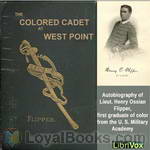 The Colored Cadet at West Point
The Colored Cadet at West Point
Henry Ossian Flipper--born into slavery in Thomasville, Georgia on March 21, 1856--did not learn to read and write until just before the end of the Civil War. Once the war had ended, Flipper attended several schools showing a great aptitude for knowledge. During his freshman year at Atlanta University he applied for admittance to the United States National Military Academy at West Point. He was appointed to the academy in 1873 along with a fellow African American, John W. Williams. Cadet Williams was later dismissed for academic deficiencies. | |
By: Henry Vizetelly | |
|---|---|
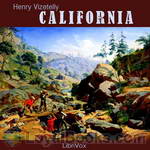 California
California
Vizetelly, writing under the pseudonym J. Tyrwhitt Brooks, recalls an expedition to California he took between 1847-1848 . Originally, he planned to enlist as a surgeon for the US Army during the Mexican war, but conflicts had ended by the time he applied. In a quick change of plans, he joined a group of prospectors on their way to the newly found gold fields of California. While he might not find service in the military, his training as a physician made him a valuable addition to the ragtag team of explorers... | |
By: Herbert George Jenkins (1876-1923) | |
|---|---|
 Bindle
Bindle
Herbert Jenkins' most popular fictional creation was Mr. Joseph Bindle, who first appeared in a humorous novel in 1916 and in a number of sequels. In the preface to the books, T. P. O'Connor said that "Bindle is the greatest Cockney that has come into being through the medium of literature since Dickens wrote Pickwick Papers". The stories are based on the comedic drama of life at work, at home and all the adventures that take place along the way. Bindle leaves a path of good-natured destruction behind him and walks away unscathed every time... | |
By: Herman Charles Merivale (1839-1906) | |
|---|---|
 My Experiences in a Lunatic Asylum
My Experiences in a Lunatic Asylum
Fully titled My Experiences in a Lunatic Asylum, by a Sane Patient, this memoir describes its author's, Herman Merivale's, experience in one of England's countryside asylums during the 1860's. The main subject - in this case, the author - is less than justly sentenced to a facility for the mentally disturbed. Literally crazy caricatures abound, prisoner and jailer alike. Lofty psychology experts float in and out of Merivale's stay, some more respectable than others, but mostly clueless to patients' real needs... | |
By: Herman W. Mudgett (1861-1896) | |
|---|---|
 Holmes' Own Story
Holmes' Own Story
An account written by the infamous serial murderer H. H. Holmes in an attempt to exonerate himself while being tried for numerous crimes in Moyamensing Prison, Philadelphia. - Summary by Autumn | |
By: Horatio Alger, Jr. (1832-1899) | |
|---|---|
 Helping Himself, or Grant Thornton's Ambition
Helping Himself, or Grant Thornton's Ambition
Helping Himself, or Grant Thornton's Ambition deals with the grit and determination of Grant, a 15 year old farmer's boy whose father is dead and in order to pay his minister father's debts, and to help his mother deal with their abject poverty young Grant postpones his college education to take a job as a Wall Street broker's clerk. The first step is to deal with the avaricious and greedy man who is keeping them from obtaining the meager amount due them and which will at least allow them to eat... | |
By: Hugh Walpole (1884-1941) | |
|---|---|
 Jeremy And Hamlet: A Chronicle Of Certain Incidents In The Lives Of A Boy, A Dog, And A Country Town
Jeremy And Hamlet: A Chronicle Of Certain Incidents In The Lives Of A Boy, A Dog, And A Country Town
Hamlet is Jeremy’s dog. This 1923 book is Hugh Walpole’s second volume in his Jeremy semi-autobiographical trilogy , Jeremy at Crale ), about a ten-year-old English boy. One commentator wrote this of the first book: “With affectionate humor, Mr. Walpole tells the story of Jeremy and his two sisters, Helen and Mary Cole, who grow up in Polchester, a quiet English Cathedral town…. Mr. Walpole has given his narrative a rare double appeal, for it not only recreates for the adult the illusion of his own happiest youth, but it unfolds for the child-reader a genuine and moving experience with real people and pleasant things... | |
By: Ian Hamilton (1853-1947) | |
|---|---|
 Gallipoli Diary, Volume I
Gallipoli Diary, Volume I
| |
By: Ida M. Tarbell (1857-1944) | |
|---|---|
 All in the Day's Work
All in the Day's Work
In this autobiography, written when the author was 82 years old, Ida Tarbell looks back at her life and remarkable career as an investigative journalist. Ms. Tarbell is best known for her 1904 work, "The History of the Standard Oil Company," which was a significant factor in the dissolution of the Standard Oil monopoly. She was a noted writer and lecturer, served on two presidential committees, and is considered by her actions to be an important feminist . - Summary by Ciufi Galeazzi | |
By: Ik Marvel (1822-1908) | |
|---|---|
 Reveries of a Bachelor
Reveries of a Bachelor
Reveries of a Bachelor, or A Book of the Heart, is a novel by American author Donald Grant Mitchell published under the pseudonym Ik Marvel. Paul, the protagonist, vividly and emotionally recalls his life and loves as he sits by his fireplace smoking a cigar, his old dog sleeping at his feet. He muses on boyhood, the country lifestyle and travel, but especially on the young women he knew, or perhaps imagines he knew, through the years. The first two reveries were originally serialized in a magazine, and subsequently all four were published in book format. A bestseller, it was one of poet Emily Dickinson's favorite books. | |
By: Isabella L. Bird (1831-1904) | |
|---|---|
 A Lady's Life in the Rocky Mountains
A Lady's Life in the Rocky Mountains
Isabella Bird began travelling while in her early twenties to help alleviate illness that had plagued her since childhood. She was a single woman in her early forties when she made her treck through the Rocky Mountains. A Lady’s Life in the Rocky Mountains details this fascinating account of her travels through a series of letters written to her sister, Henrietta. These letters are filled with beautiful, vivid descriptions of the scenery, the people she encountered, the way of life, and a mountain man named Jim Nugent, that was as rough as they come, but a complete gentleman with Ms... | |
 Among the Tibetans
Among the Tibetans
Isabella L. Bird was an English traveller, writer and natural historian. She was travelling in the Far East alone at a time when such endeavours were risky and dangerous even for men and large, better equipped parties. In "Among the Tibetans", Bird describes her tour through Tibet with her usual keen eye: From descriptions of the landscape and flora to the manners, customs and religion of the local people we get a fascinating account of a world long past. | |
By: J. M. Barrie (1860-1937) | |
|---|---|
 Tommy and Grizel
Tommy and Grizel
This book continues Sentimental Tommy, also in the catalogue. Tommy grows up and marries Grizel. But life is not only roses and rainbows. This book has all the elements of a good love story, but it is also a book about growing up and finding out your distinct voice in the world. - Summary by Stav Nisser. | |
By: J. Saunders Redding (1906-1988) | |
|---|---|
 On Being Negro in America
On Being Negro in America
A penetrating, insightful, and thoroughly honest view of one's life in the United States as an African-American. - Summary by KevinS | |
By: Jack London (1876-1916) | |
|---|---|
 John Barleycorn or Alcoholic Memoirs
John Barleycorn or Alcoholic Memoirs
Jack London died at the age of forty. In this autobiographical work, London describes his life as seen through the eyes of John Barleycorn (alcohol). There is much controversy about the cause of his death just as there is about alcoholism and addiction. London’s brutally frank and honest analysis of his own struggles and bouts with alcohol was way before its time and more modern theories of addiction. With remarkable candor and insight, London describes the demons and gods he encountered through both friend and enemy, John Barleycorn. | |
 The Cruise of the Snark
The Cruise of the Snark
The Cruise of the Snark (1913) is a memoir of Jack and Charmian London’s 1907-1909 voyage across the Pacific. His descriptions of “surf-riding”, which he dubbed a “royal sport”, helped introduce it to and popularize it with the mainland. London writes: Through the white crest of a breaker suddenly appears a dark figure, erect, a man-fish or a sea-god, on the very forward face of the crest where the top falls over and down, driving in toward shore, buried to his loins in smoking spray, caught up by the sea and flung landward, bodily, a quarter of a mile... | |
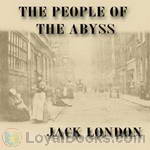 The People of the Abyss
The People of the Abyss
Jack London lived for a time within the grim and grimy world of the East End of London, where half a million people scraped together hardly enough on which to survive. Even if they were able to work, they were paid only enough to allow them a pitiful existence. He grew to know and empathise with these forgotten (or ignored) people as he spoke with them and tasted the workhouse, life on the streets, … and the food, which was cheap, barely nutritious, and foul.He writes about his experiences in... | |
 Road
Road
Jack London credited his skill of story-telling to the days he spent as a hobo learning to fabricate tales to get meals from sympathetic strangers. In The Road, he relates the tales and memories of his days on the hobo road, including how the hobos would elude train crews and his travels with Kelly’s Army. | |
By: Jacob Stroyer (1849-1908) | |
|---|---|
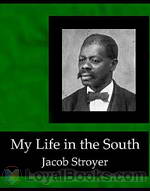 My Life in the South
My Life in the South
My Life in the South is the vivid and touching autobiography of African-American former slave, Jacob Stroyer. It recounts experiences from his early childhood on the planation up to his involvement in the Confederacy's war effort and eventually his experience of becoming a free man. | |
By: Jacob William Wright | |
|---|---|
 The Long Ago
The Long Ago
Short memory of boyhood by a little-known American poet based in Carmel-By-The-Sea, California. | |
By: James Boswell (1740-1795) | |
|---|---|
 The Life of Samuel Johnson
The Life of Samuel Johnson
Boswell’s Life of Samuel Johnson is widely considered to be the greatest English-language biography ever written. It was revolutionary in its efforts to represent Johnson as he was, celebrating his flaws as well as his genius, and in Boswell’s decision to represent Johnson primarily by quoting his writings and relating personal anecdotes rather than relying on matters of public record. From the time of its publication till now, The Life of Johnson has been one of the most popular and influential books ever written. | |
By: James Orton (1830-1877) | |
|---|---|
 The Andes and the Amazon
The Andes and the Amazon
This book, with the subtitle "Across the Continent of South America" describes the scientific expedion of 1867 to the equatorial Andes and the Amazon. The route was from Guayaquil to Quito, over the Cordillera, through the forest to Napo, and, finally, on the Rio Napo to Pebas on the Maranon. Besides this record, the expedition - under the auspices of the Smithsonian Institute - collected samples of rocks and plants, and numerous specimen of animals. The scientists also compiled a vocabulary of local languages and produced a new map of equatorial America... | |